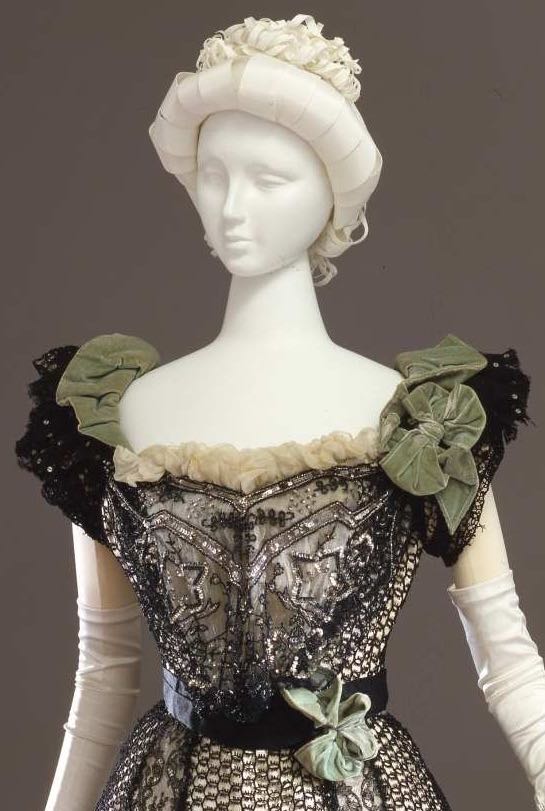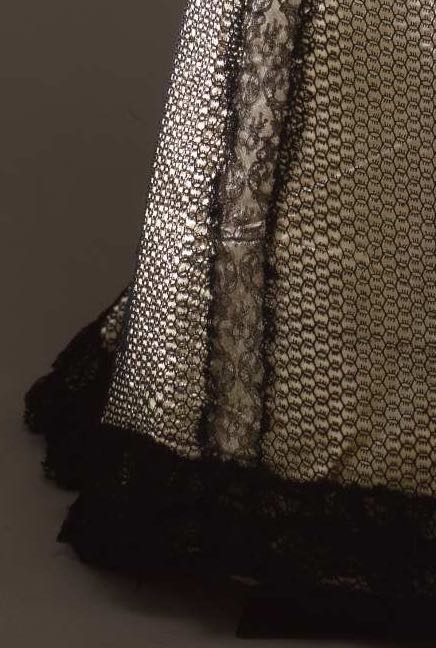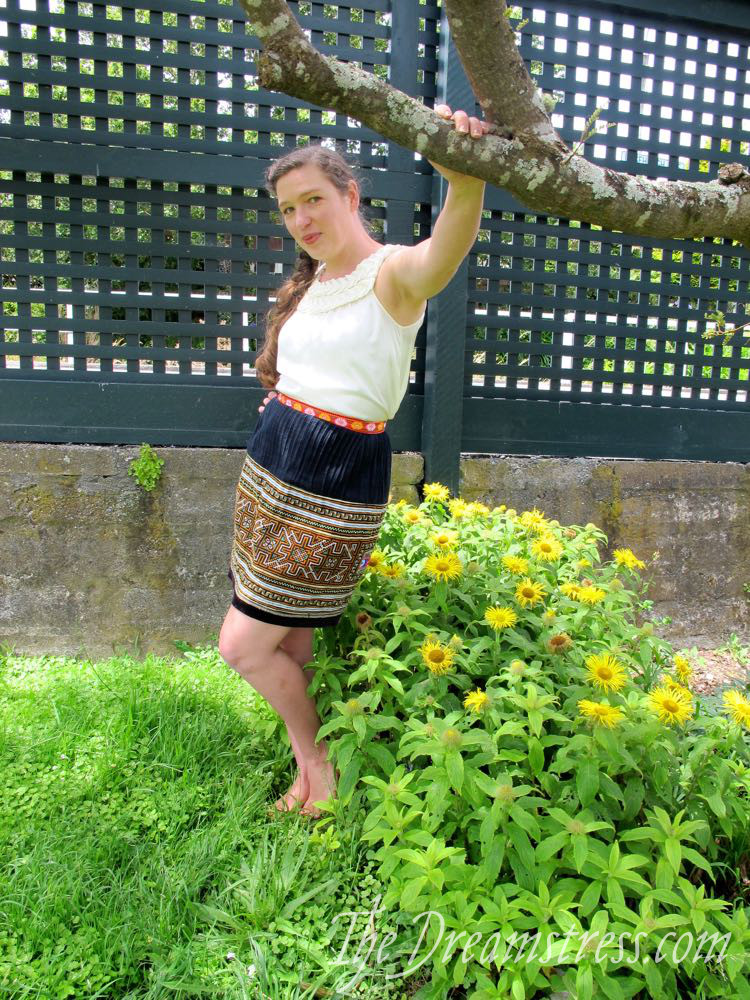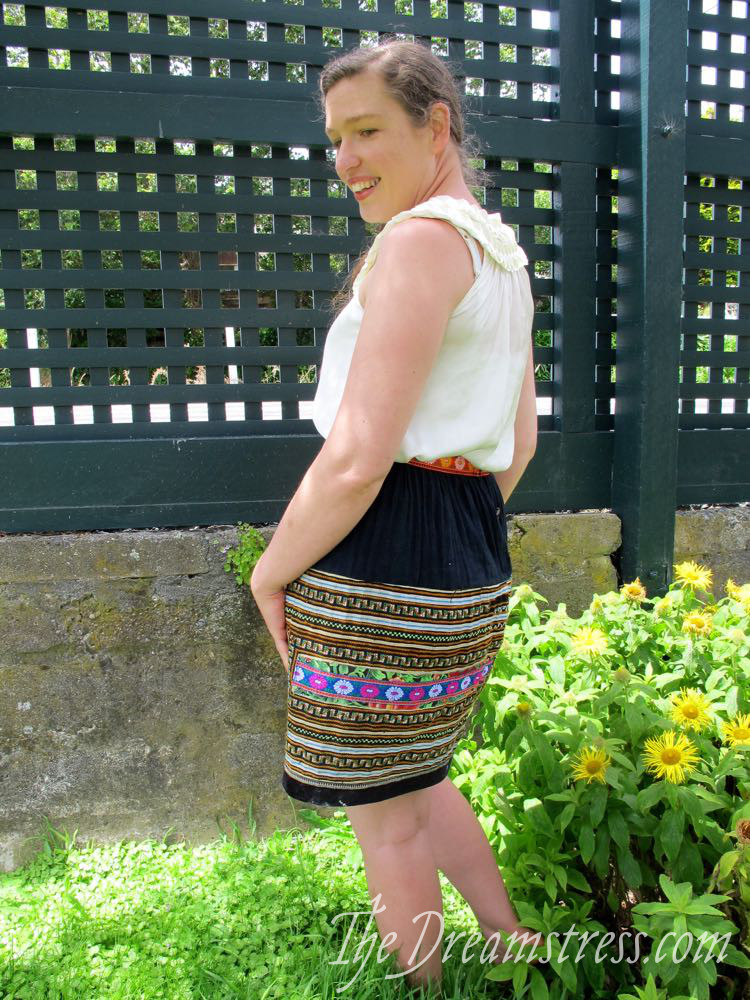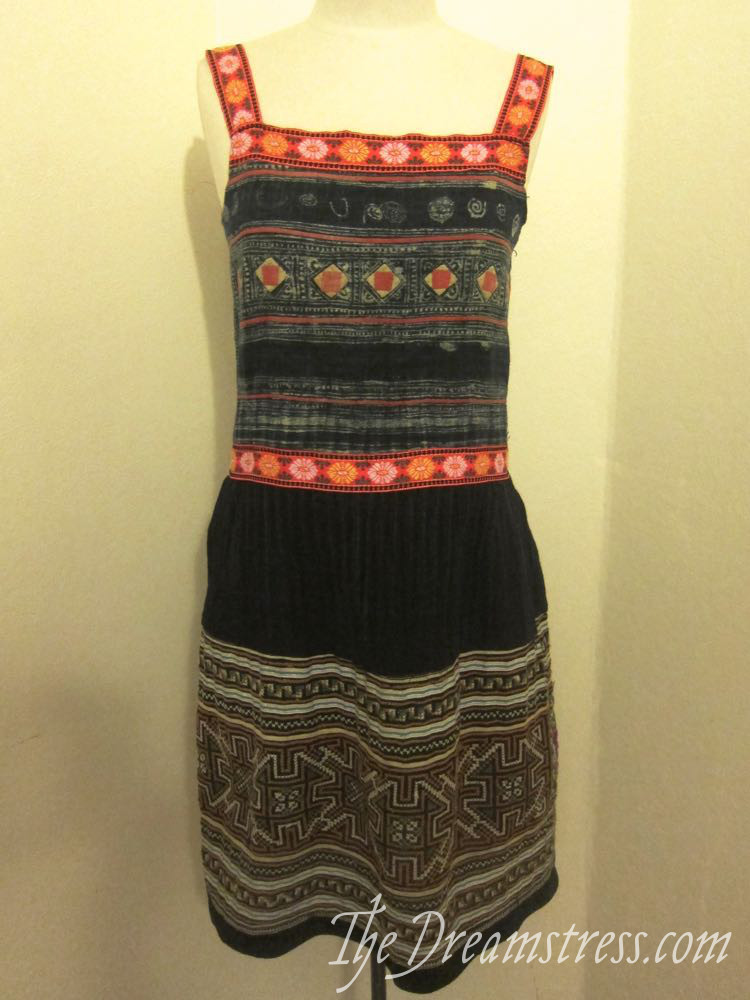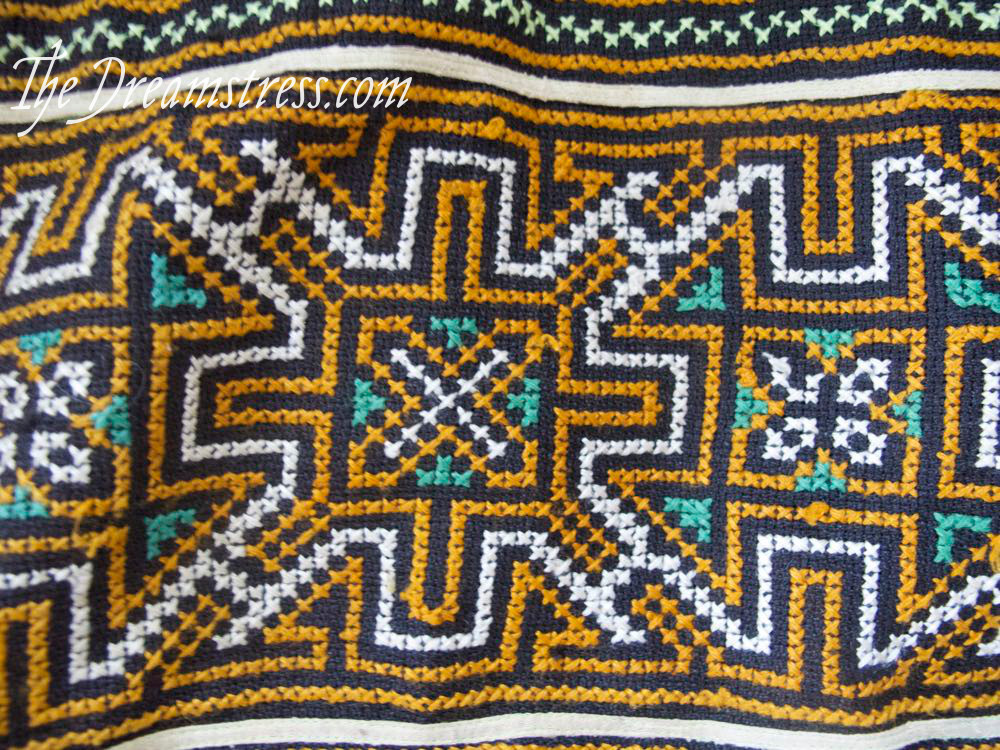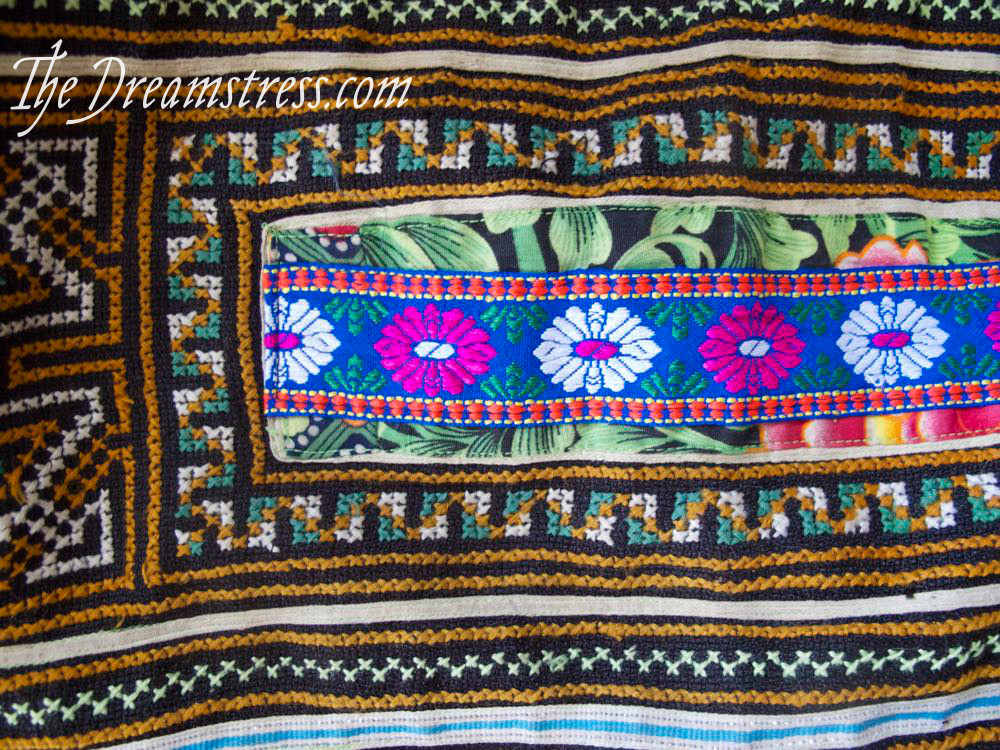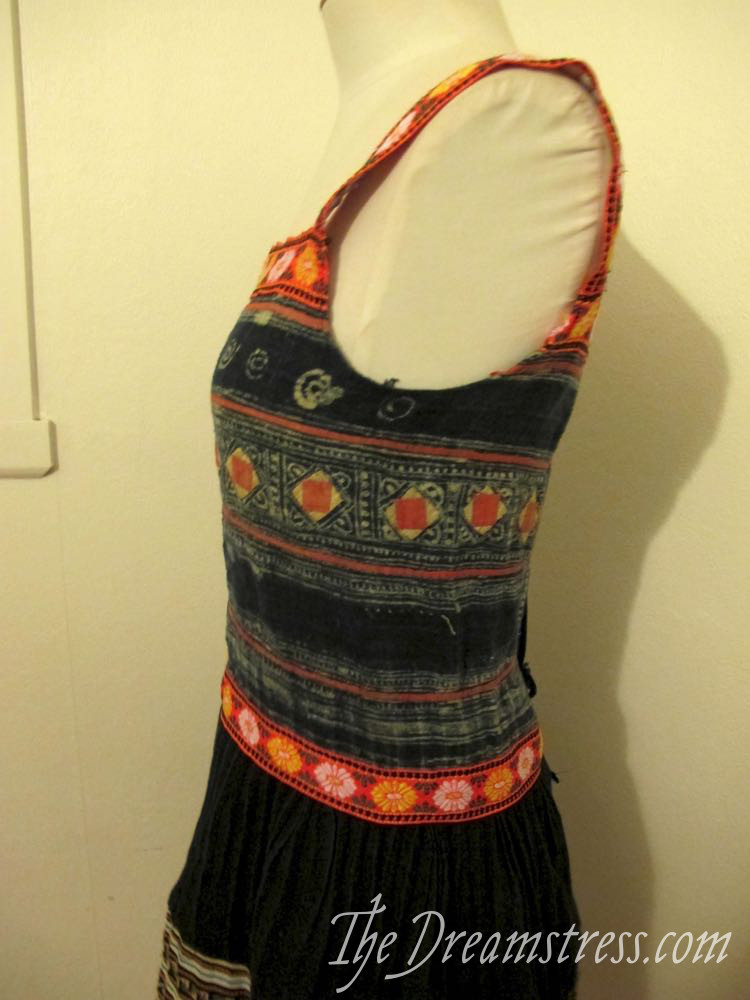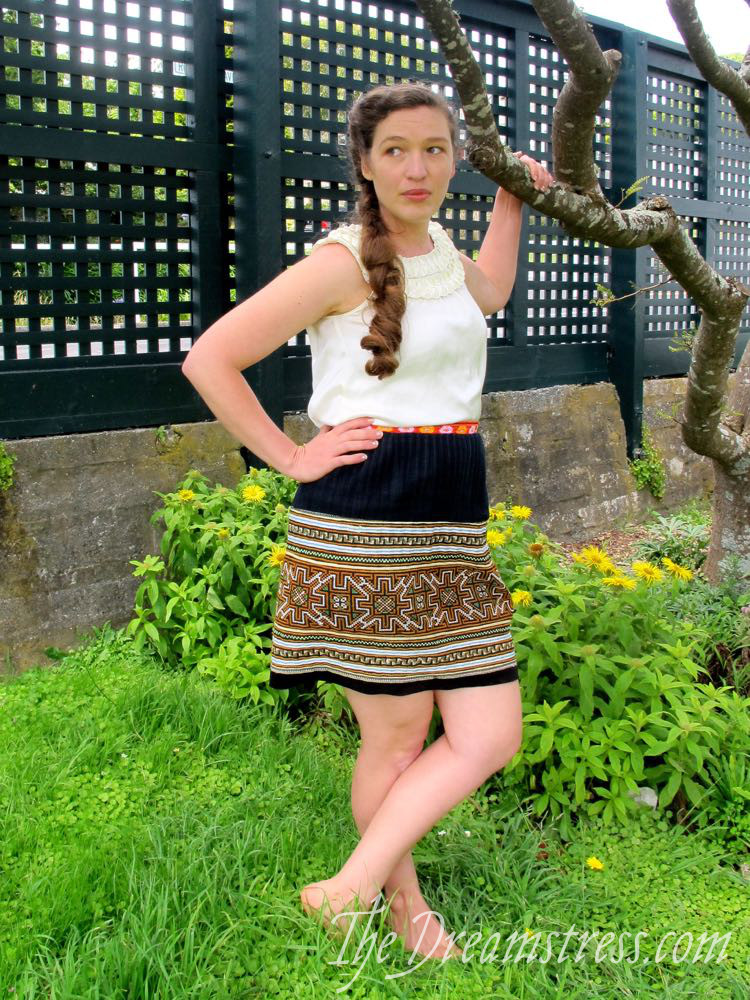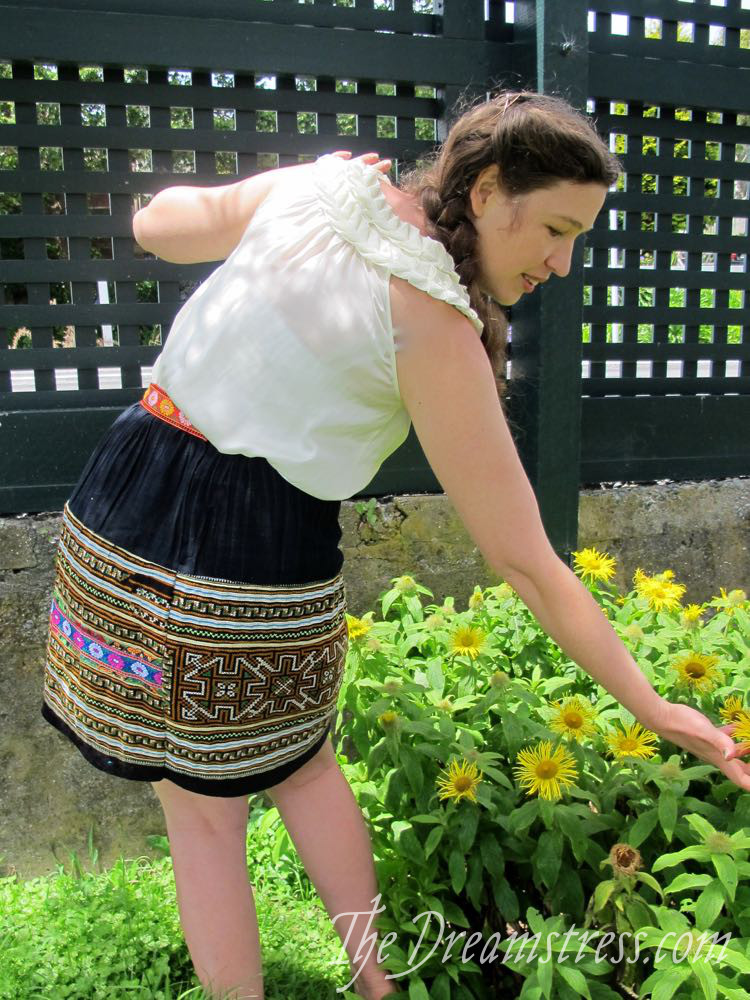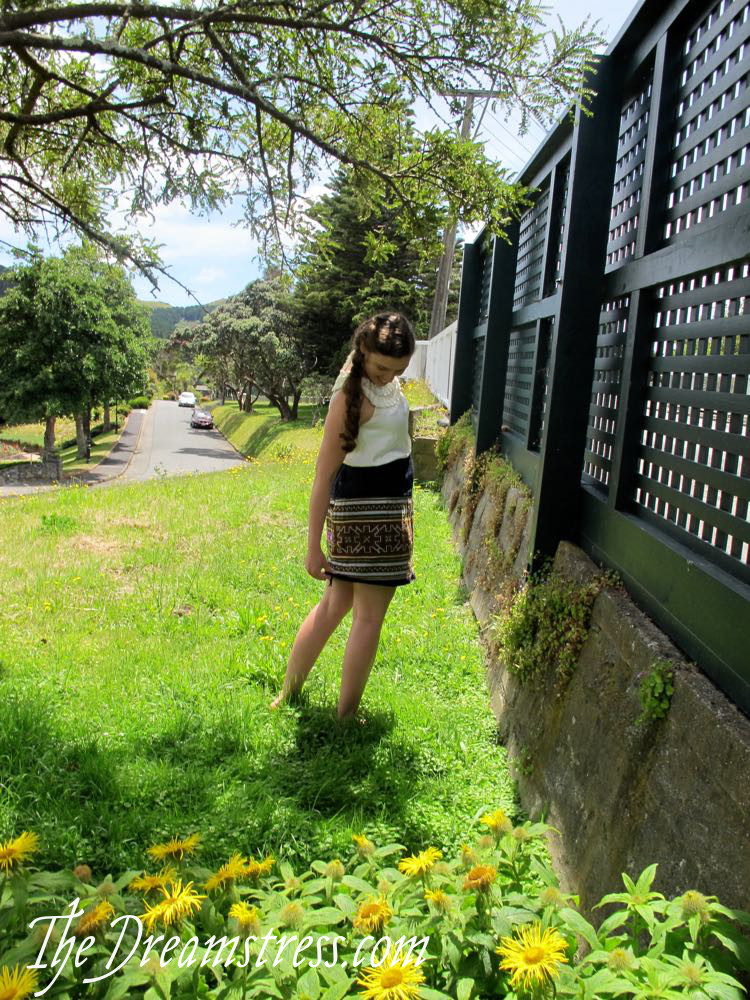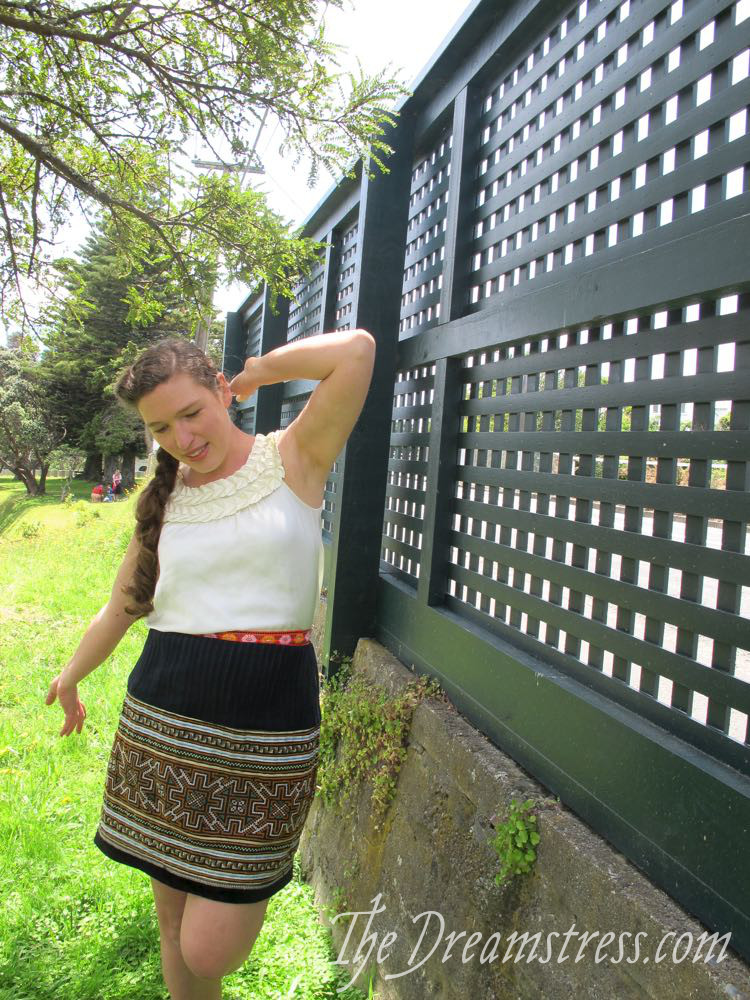Oh dear…last week’s late 1860s Rate the Dress…
OK, some of you did like it! But it came in for some harsh criticism, and some pretty bad analogies: tongues, teeth & Daleks for starts! And even most of you who did like it liked it in spite of itself. Kit promised to “enter therapy and bind 40 half ovals as a penance” for her high score. I’m kind of in the same boat. I know it was awful, and yet, I felt it could have been really effective on the right person – if it only weren’t for the mess happening at the bottom of the bodice. I can forgive ugly (as long as it’s effective) but I can’t forgive bad construction, so my rating would only have been a 5 – lower than your average score, which was just a tiny bit below the average of 5.9 out of 10 that it came out at.
I’ve kept within the same colour scheme this week: black and ivory, with just a touch of another colour. This type, rather than last weeks very divisive marsala satin, the contrast colour comes in the form of soft sage green velvet.
While not as famous as her French counterparts, Mrs C Donovan was one of the most important American dressmakers of the late 19th century, and her gowns at times rivalled those produced by the great European houses.
This particular evening dress uses the sparkle of sequins and the lustre of the unusual silk to reflect the shine of the increasingly popular gaslights that would be lighting the ballrooms that it would have been worn in. The tulle and lace insets in the skirt and bodice show the trend towards increasingly delicate and fragile female fashions at the turn of the 20th century.
What do you think? Does this dress achieve balance between the heavy fabrics and structured silhouette of the late 19th, and the more ephemeral aesthetic of the Edwardian era? If you didn’t know the designer, would you think Parisian couture?
Rate the Dress on a Scale of 1 to 10


